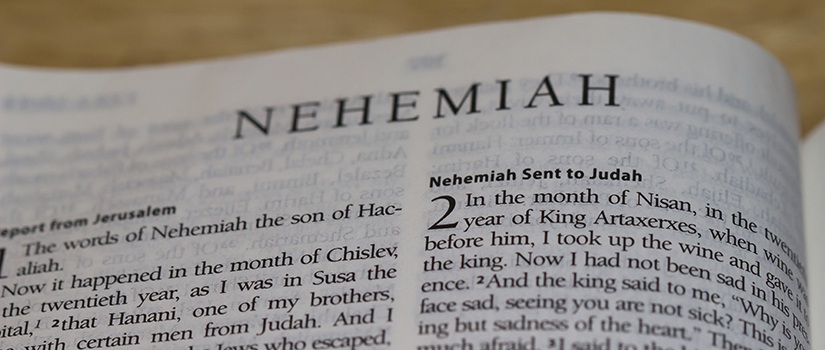It is Finished
Our text is found in John’s Gospel – John 19:30. It is a simple text but profound. Its implications are far reaching and enduring. This text tells us that Jesus had a task to fulfill.
~~~~~~~~~~~~~~~~~Contents~~~~~~~~~~~~~~~~~
1. Introduction
2. Jesus’ death Brings Atonement For Sins
3. Jesus Conquered Death
5. Gives Access To The Holy Of Holies
4. Jesus’s Death Brings Reconcilliation To God
6. Brings Acceptance By God
7. Jesus’ Death Takes Away Enemity
8. Gives Assurance Of Salvation
9. Conclusion
~~~~~~~~~~~~~~~~~~~~~~~~~~~~~~~~~~~~~~~~~~
Introduction:
John 19:30 says, “So when Jesus had received the sour wine, He said, “It is finished! And bowing His head, He gave up His spirit.”
The barbaric execution that Jesus suffered is summed up in these three words.
“It is finished.”
In his book, The Day Christ Died, Jim Bishop conveys the horror of such an execution. He writes: “The executioner laid the crossbeam behind Jesus and brought Him to the ground quickly by grasping His arm and pulling Him backward. As soon as Jesus fell the beam was fitted under the back of His neck, and on each side, soldiers quickly knelt on the inside of the elbows…The thorns pressed against His torn scalp…
With his right hand, the executioner probed the wrist of Jesus to find the little hollow spot. When he found it, he took one of the square-cut iron nails…raised the hammer over the nail head and brought it down with force. Two soldiers grabbed each side of the crossbeam and lifted. As they pulled up, they dragged Jesus by the wrists. With every breath, He groaned. When the soldiers reached the upright, the four of them began to lift the crossbeam higher until the feet of Jesus were off the ground. The body must have writhed with pain.
When the crossbeam was set firmly, the executioner knelt before the cross. Two soldiers hurried to help, and each one took hold of a leg at the calf. The ritual was to nail the right foot over the left, and this was probably the most difficult part of the work. If the feet were pulled downward, and nailed close to the foot of the cross, the prisoner always died quickly. Over the years, the Romans learned to push the feet upward on the cross, so that the condemned man could lean on the nails and stretch himself upward [to breathe].”
Chuck Swindoll, adds, “Excruciating pain accompanied every upward push for breath and every downward release from fatigue. Each movement cut deeper into bone, and tendons, and raw muscle. Fever inevitably set in, inflaming the wounds and creating an insatiable thirst. Waves of hallucinations drifted the victim in and out of consciousness. And in time, flies and other insects found their way to the open wounds.
At this point, Jesus knew He had accomplished everything the Father had sent Him to do. To fulfill one last Scripture, He said, “I am thirsty.” A jar full of sour wine was standing there; so they put a sponge full of the sour wine upon a branch of hyssop, and brought it up to His mouth. When Jesus therefore had received the sour wine, He said, “It is finished!” And He bowed His head, and gave up His spirit” (John. 19:28b-30).
Those three words, “It is finished” come from one Greek word tetelestai.
“The word “tetelestai” is unfamiliar to us, but it was used by various people in everyday life in those days.
A servant would use it when reporting to his or her master.
Jesus is saying, “I have completed the work assigned to me”
“I have finished the work which thou gavest me to do.” (John 17:4).
When a priest examined an animal sacrifice and found it faultless, this word would apply.”
The word means,
“It is finished, it stands finished, and it always will be finished!”
These words specify not the end of Jesus’ life, but the completion of His task. The verb tense is perfect. “It is finished!” The purpose of His hour has been completed, and the consequences of His work are enduring.
Max Lucado writes, “The history-long plan of redeeming man was finished. The message of God to man was finished. The works done by Jesus as a man on earth were finished. The task of selecting and training ambassadors was finished. The job was finished. The song had been sung. The blood had been poured. The sacrifice had been made. The sting of death had been removed. It was over.”
Warren Wiersbe says, “Perhaps the most meaningful meaning of tetelestai was that used by the merchants: “The debt is paid in full!” When He gave Himself on the cross, Jesus fully met the righteous demands of a holy law; He paid our debt in full.”
What then do we learn about the completion of our redemption?
“It is finished or paid” John 19:30
Christ satisfied God’s justice by dying for all to pay for the sins of the elect. These sins can never be punished again since that would violate God’s justice. Sins can only be punished once, either by a substitute or by yourself.
What do we learn about the salvation that Jude says “was once for all delivered to the saints” (Jude 1:3)?
Jesus’ words, “It is finished” provides for us 4 glorious benefits.
2. JESUS’ DEATH BRINGS ATONEMENT FOR SINS:
Warren Wiersbe, writes, “None of the Old Testament sacrifices could take away sins; their blood only covered sin. But the Lamb of God shed His blood, and that blood can take away the sins of the world. (John 1:29; Hebrews 9:24–28).”
JESUS’ DEATH CONQUERED SIN
John 1:29. “The next day John seeth Jesus coming unto him, and saith, Behold the Lamb of God, which taketh away the sin of the world. {taketh away: or, beareth} (KJV)
Hebrews 9:26b. “..: but now once in the end of the world hath he (Christ) appeared to put away sin by the sacrifice of himself.
28 a. “So Christ was once offered to bear the sins of many;” (KJV)
He “purged our sins” (a cleansing from the guilt of sins wrought by the expiatory sacrifice of Christ) (Hebrews 1:1-3)
1 John 1:7. “But if we walk in the light as He is in the light, we have fellowship with one another, and the blood of Jesus Christ His Son cleanses us from all sin.”
“cleanse” Gr. katharizo, “to declare clean, make clean, purify”
This (the cleansing of sins) is an ongoing process.
Kenneth Wuest says, “And while we are having this fellowship with Him, the blood of Jesus, His Son, keeps constantly cleansing us from sins of omission, sins of ignorance, sins we know nothing about in our lives. And for the reason that we have not grown in grace enough to see that they are sin. These (Sins) would prevent our fellowship with God if this Divine provision of the constant cleansing away of the defilement of sin in our lives was not taken care of by the blood of the Lord Jesus Christ. So holy is the God with whom we have fellowship.”
Hebrews 9:14. “How much more shall the blood of Christ, who through the eternal Spirit offered Himself without spot to God, cleanse your conscience from dead works to serve the living God?” (K.J.V.)
Revelation 1:4. “John, to the seven churches which are in Asia: Grace to you and peace from Him who is and who was and who is to come, and from the seven Spirits who are before His throne,
5. And from Jesus Christ, the faithful witness, the firstborn from the dead, and the ruler over the kings of the earth. To Him who loved us and washed us from our sins in His own blood.” (K.J.V.)
Ephesians 1:7. In Him we have redemption through His blood, the forgiveness of sins, according to the riches of His grace; (K.J.V.)
3. JESUS CONQUERED DEATH:
Hebrews 2:9. “ But we see Jesus, who was made a little lower than the angels, for the suffering of death crowned with glory and honor, that He, by the grace of God, might taste death for everyone.” (K.J.V.)
John MacArthur, writes in his commentary on Hebrews: “We see the extent of Christ’s humiliation in His death. Angels cannot die; but Jesus came to die. He went so far beneath angels that He did something that they could never do. His death was not easy or cost-less. It was a suffering death. Christ’s exit from the land of the living was not calm and peaceful, but was accompanied by outward torture and inner agony.
The death He tasted was the curse of sin. What Jesus felt while dying on the cross was the total agony of every soul in hell for all eternity put together, suffered in a few hours. All the punishment for all the sin of all time,—that was the depth of His death. He was guilty of no sin, yet He suffered for all sin.”
God sent His Son, and His Son willingly came, to die to redeem man.
Galatians 4:4 “But when the fulness of the time was come, God sent forth His Son, made (born) of a woman, made (born) under the Law, 5a. To redeem them that were under the law, …” (K.J.V)
Jesus Christ in His death purposed to die as a substitute for everyone. And it is only by the Son tasting death as a man, for man, that we are free from the sting of death.
(1 Corinthians 15:54-57) His death destroyed the power of death.
Historically, kings have had someone taste their food to protect them from possible poisoning. The cup of poison that belonged to us was drained to the dregs by Jesus Christ.
He substituted His own death for ours and released us to live with God.
Hebrews 2:14. “Forasmuch then as the children are partakers of flesh and blood, He also Himself likewise took part of the same; that through death He might destroy him that had the power of death, that is, the devil;
15. And deliver them who through fear of death were all their lifetime subject to bondage.”
1 Corinthians 15:55. “O Death, where is thy sting? O grave, where is thy victory?
56. The sting of death is sin; and the strength of sin is the law.
57. But thanks be to God, which gives us the victory through our Lord Jesus Christ.” (KJV)
4. JESUS’ DEATH BRINGS RECONCILLIATION TO GOD:
Romans 5:8. “But God commendeth His love toward us, in that, while we were yet sinners, Christ died for us.
9. Much more then, being now justified by His blood, we shall be saved from wrath through Him.
10. For if, when we were enemies, we were reconciled to God by the death of His Son, much more, being reconciled, we shall be saved by His life.
11. And not only so, but we also joy in God through our Lord Jesus Christ, by whom we have now received the atonement (reconciliation).” (K.J.V.)
“Reconciliation” Gr. katallasso,
“To return to favor with, to receive one into favor.”
“To put someone into friendship with God.”
Paul does not conceive it as his or our task to reconcile God to us.
God has attended to that himself.
Ephesians 2:14. “For He is our peace, who hath made both one, and hath broken down the middle wall of partition between us,
15. Having abolished in His flesh the enmity, even the law of commandments contained in ordinances; for to make in Himself of twain one new man, so making peace;









